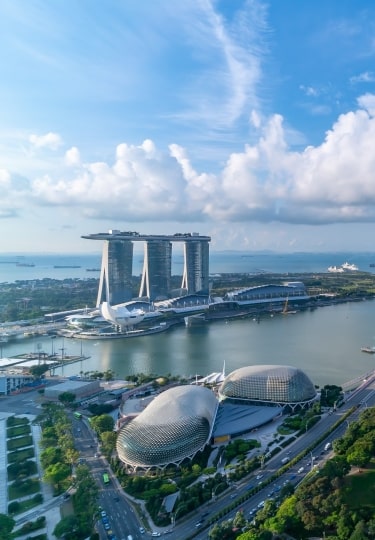Although the city-state enjoys a warm and tropical climate year-round, the best time to visit Singapore is between October and April. During this period, you’ll avoid the smoke and haze from nearby Indonesia’s burning season, and skip the strongest winds of the southwest monsoon season.
Sitting just north of the equator, Singapore doesn’t have vastly varying temperatures and clearly defined seasons such as winter and summer. Instead, the weather is categorized by different monsoon periods, with short showers and rainfall fairly consistent throughout the year.
Visiting Singapore By Season
Summer
Singapore’s location on the edge of the northern hemisphere means summer occurs between June and September, although the season is best characterized by the southwest monsoon season. During this period, the city can experience strong winds of up to 50mph, quick-passing thunderstorms, and average highs of a balmy 89°F (32°C).
Although these are some of Singapore’s driest months, the potential for fierce gusts, haze, and smoke from nearby Indonesia means this isn’t the best time to go to Singapore; the pollution and low visibility often negatively impact on visits.
Fall
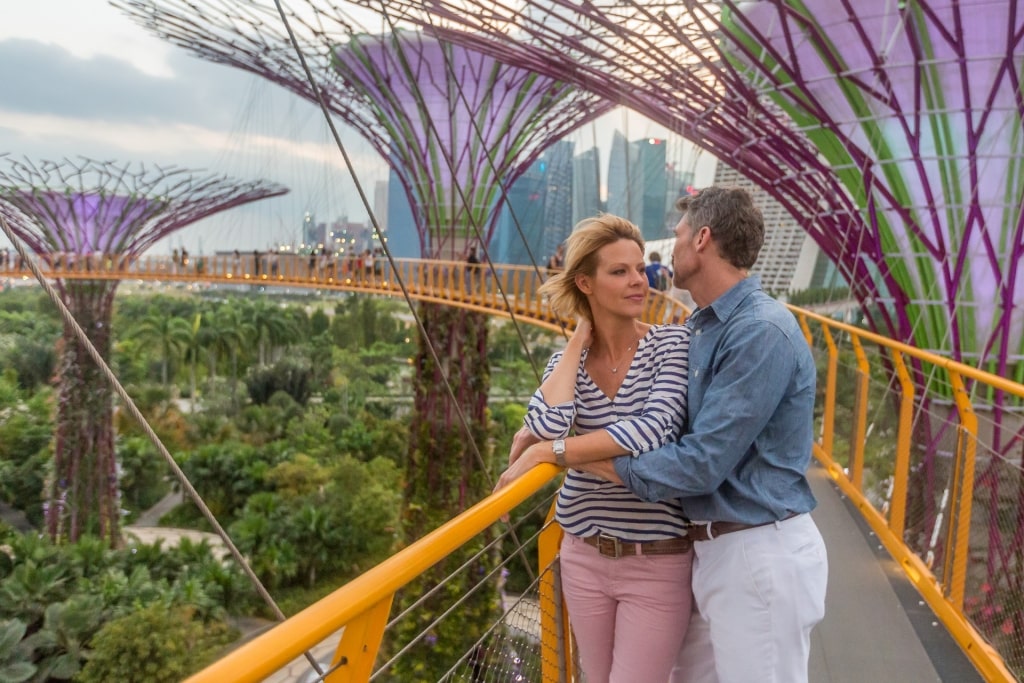
Gardens by the Bay
Fall in Singapore is defined by the inter-monsoon period, during October and November, when temperatures range between a beach-friendly 77°F and 89°F (25°C to 32°C).
While this season brings some thunderstorms and rains, they are sporadic and usually short, sharp showers, easily avoided by slipping into a futuristic museum or shopping mall.
Read: What to Buy in Singapore
Winter
Winter, especially the lead-up to Christmas and New Year—including Lunar New Year in late January—is the best time to visit Singapore and savor the city full of life and celebrations. It’s also when the country is at its “coolest”, with average temperatures hovering around 77°F (25°C) and topping out at 86°F (30°C).
Between December and January, when the city experiences the highest humidity, rain and winds are more likely, but can pass quickly. By late January, the showers become much less frequent, with February being the driest month of the year. March is a particularly delightful time to visit Singapore, as the Sakura (cherry blossom) season brightens the city’s gardens.
Spring
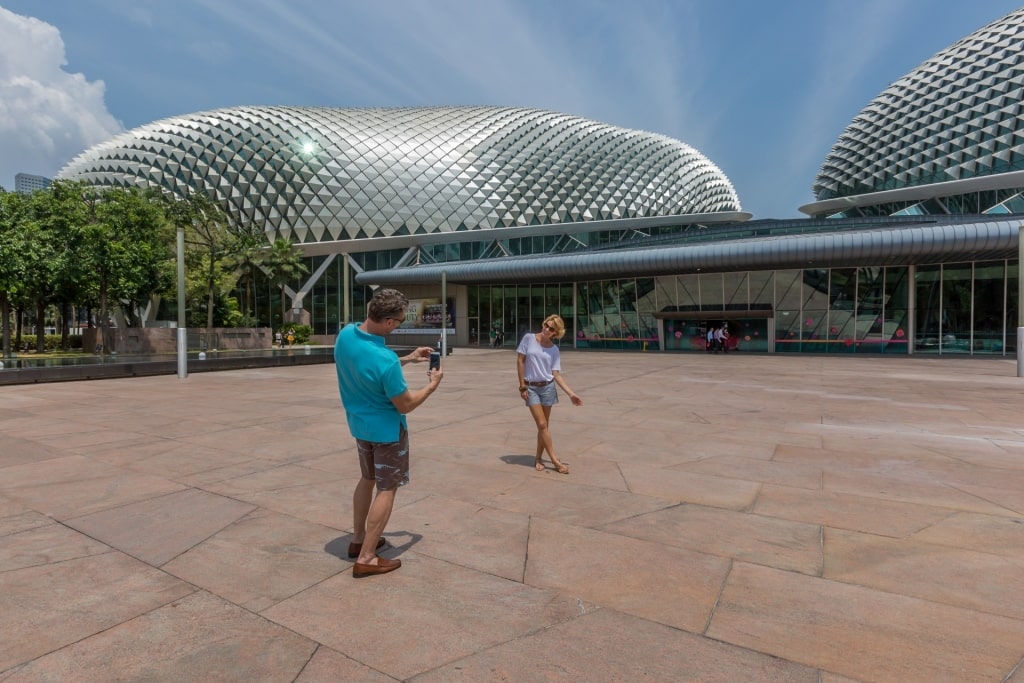
Esplanade
From March until late May, you’ll experience some of the driest and warmest months in Singapore, with consistent highs of 89°F (32°C), making it the best time to visit Singapore for more reliable weather.
During this inter-monsoon period, storms still occur, though thankfully, they are often short bursts and easily avoided by planning some museum visits or retail therapy in the late afternoon.
When Is Rainy Season?
With an average of 167 rainy days a year spread fairly evenly across the calendar, Singapore doesn’t have a clearly defined rainy season. Even during the driest month of February, perhaps the best time to go to Singapore for a peaceful break, showers can still occur every few days.
Thankfully the tropical climate means the warm rains and storms often depart as quickly as they arrive, and with a bit of forward planning, you can easily avoid them. Making use of Singapore’s extensive and efficient metro system (MRT) will help you sidestep any bad weather.
A bounty of Singapore’s landmarks, including indoor museums and attractions, offer plenty of dry places to enjoy—even some of the city’s tropical gardens are housed in glass domes.
When Is High Season?
As a year-round city-break destination, Singapore sees a considerable amount of visitors throughout the year. Still, the high season is generally regarded as December and January, when Christmas and Lunar New Year draw in the crowds all eager to soak up the festive atmosphere.
June and July are also high season months—even though the weather can be unreliable—thanks to the school holidays and the Great Singapore Sale, a huge city-wide shopping event of considerable deals on luxury goods.
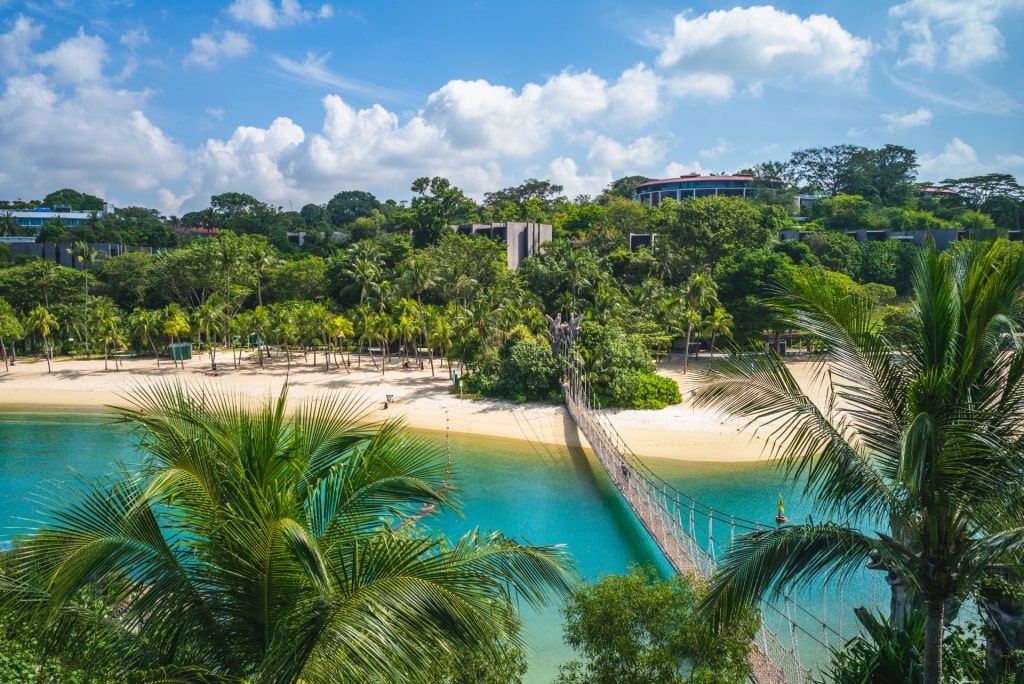
Palawan Beach
When Is Shoulder Season?
The shoulder season falls between two of Singapore’s most significant events, the Lunar New Year in late January and the start of the Great Singapore Sale in June; you’ll find the city slightly quieter during this period.
With less intense humidity and drier days, it’s the best time to visit Singapore for a more rounded experience, especially if you wish to enjoy the nature-laden trails of the nation’s smaller islands or lounge on some of Singapore’s best beaches.
When Is Low Season?
Singapore’s low season lasts from August to November, between the main summer school holidays and before the pre-Christmas rush. This can be one of the best times to go to Singapore as, with fewer visitors, you can enjoy the city’s major attractions without jostling for the best photo spot.
There are also some fantastic cultural events during these months, such as the Hindu celebration of Deepavali (Festival of Lights), which is observed in either October or November; head to Singapore’s Little India quarter to experience the festival at its most colorful.
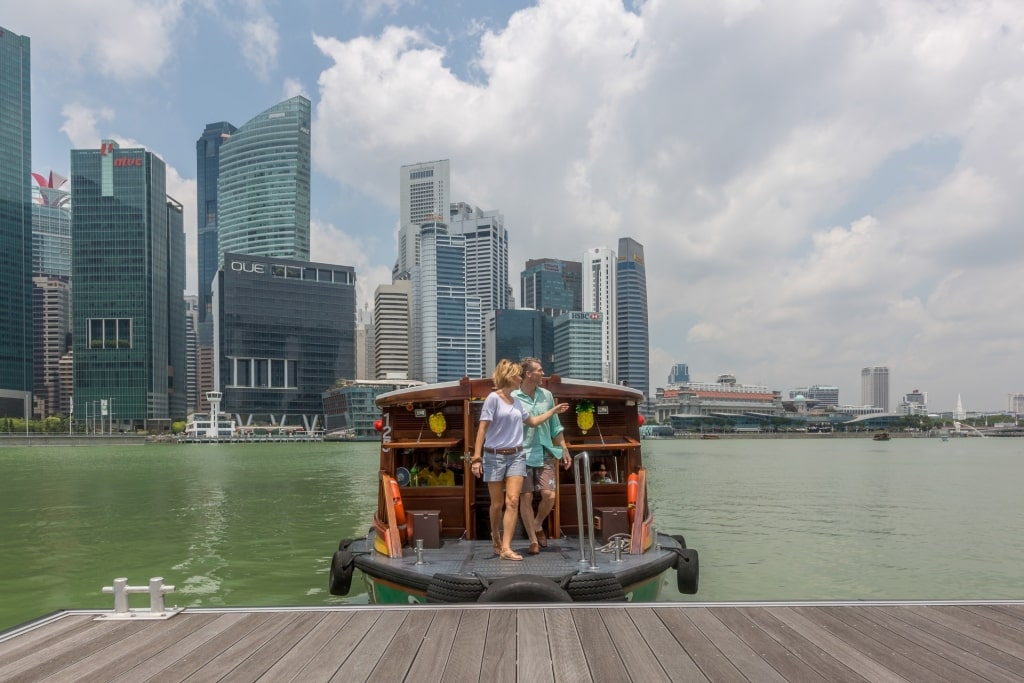
Singapore River
Excited to discover Singapore’s medley of cultures, cuisine, and contemporary architecture? Browse Celebrity’s cruises to Singapore to plan your next dream vacation.
